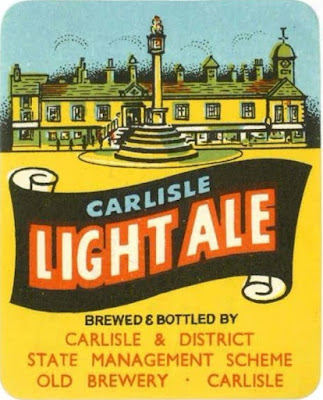Starting with a look at the preferences of the young:
“This diversity of habit is influenced by the younger generation. They tend to prefer bottled beer: perhaps because it is widely advertised, perhaps because it is "packaged goods." Moreover, draught beer is "what Dad drinks" and, presumably, he cannot be right. Also there is the intriguing snobbery of pub drinking — the desire if you are a leader in a pub community to cut a dash and be different or, if you are merely a hero-worshipper, to be the same as someone you admire. And so the brewer has to contend with astonishing permutations and combinations of his own beers. How often he hears a licensee say, "Oh, yes, they call for that mixed with half-a-pint of bitter." "That" is probably one of the bottled beers the brewer has brewed with extreme trouble to be drunk on its own. One of the most successful mixed drinks in recent years — lager and lime-juice, of obscure origin and drunk mostly by the young—accounts largely for the increased sales of lager. It is by no means a sweet drink, which is an interesting point, because in many parts of the country the drinking of bitter beers is on the increase. Traditionally bitter is looked on as the bosses' drink. Any man reckons to-day he's as good as his boss. So he chooses bitter.”
"Beer in Britain", 1960, pages 96 - 97.
When I was young, with the exception diet Lager and Newcastle Brown, no-one under 30 drank bottled beer. By that time the bottled-beer supping youngsters of the 1950’s had become Dads themselves, so who would want to follow their choice of drink? Brown Ale, Light Ale, Mackeson – all were old men’s drinks.
The phenomenon is something I’ve noted before. I keep repeating that when Lager becomes associated with old men its fall from favour will be spectacular.
Brewers were perfectly well aware that their bottled beers were being mixed with draught. A common practice amongst those who might like to drink bottled beer, but couldn’t afford to. In 1958, a pint of draught Mild was 15d, a pint of bottled Brown Ale 19d. It was the same story with Pale Ales: draught Ordinary Bitter 17d a pint, bottled Light Ale 21d a pint.
I’m not so sure brewers really worried about their beers not being drink on their own. The Light and Bitter mixed in the public bar might well have been the same basic beer, just packaged differently Ditto with Mild and Brown Ale, another popular combination.
I’m disappointed that the author has no explanation for the appearance of Lager and lime. A combination which has largely disappeared since. Was it just alliteration behind the craze? And was it really responsible for the surge in Lager drinking? This was a key period in the history of British Lager. After decades of pootling along as a very niche product, Lager began to spread its wings and take to the air. Many regional brewers introduced their own Lagers around this time.
I’ve seen several references to the effect of television on drinking habits. And it would be hard to argue against it having encouraged home drinking.
“Television is another influence in establishing a new trend—drinking at home. Wines and spirits have probably benefited most, though beer has had its share, too. Continental holidays have resulted in a greater interest in, and taste for, wines. The heavy rate of tax on beer and the great influx of excellent cheap wine from abroad have narrowed the difference in cost to the consumer. It is too early to say whether the advent of the can is going to increase the sale of beer for home consumption. Price at present helps to keep sales of canned beer in check. On the other hand, the neat and generally attractive appearance of a beer-can and the absence of a deposit charge are strong selling points.”
"Beer in Britain", 1960, page 97.
I always think of mass foreign tourism as a development of the 1960’s. Clearly it started earlier. Did it really encourage people to drink wine? I’ve often seen foreign travel cited as a reason for the increase in popularity of Lager.
I’ve never found cans particularly attractive myself. But, yes, when their price came down, it did help increase home drinking.
We really will be looking at the types of beer in more detail next. Promise.












































































3 comments:
Whilst I can see a fall in popularity in lager in (UK) bars, is it really likely to decrease in sales for home consumption whilst the unit price remains so low and it is used as a loss leader in supermarkets?
Non-returnable bottles seem to have been beyond the writers' imagination! There must have been a few years - between returnable bottles going out & bottle banks coming in - when the landfills were absolutely clogged with glass. Something for future archaeologists.
Lager as a 'Dad' drink - shouldn't it have happened by now? I think that particular stigma is much more likely to attach to John Smith's Smooth. I don't know how or why lager has dodged it, though.
Interesting that lager & lime was in vogue as early as 1960. I wonder if the observation about it not being a sweet drink was from experience, or if the writer was just winging it? By the 1970s, at least, I'm pretty sure it was normally lager with lime cordial, not lime juice - which obviously did sweeten it. As to where L&L came from, my guess would be that it was an offshoot of the initial attempts to market lager as 'lighter' and less offputting than bitter; if your girlfriend still finds it tastes too bitter, try her with a lager and lime! But this is complete speculation.
"Lager and lime. A combination which has largely disappeared ..."
Except among the far-too-many drinkers of Sol and Corona, of course.
Post a Comment